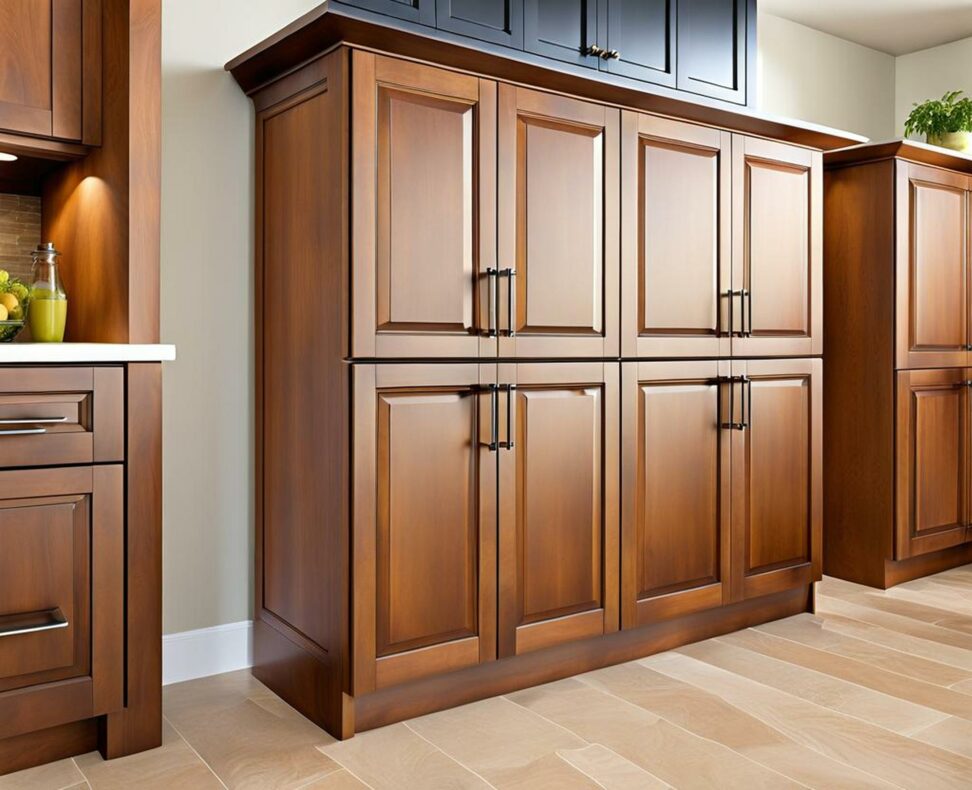See How Slab & Shaker Kitchen Cabinets Differ in Style & Construction
When considering a kitchen remodel, choosing the right cabinet style is key to achieving your dream aesthetic. Two popular modern options—slab and shaker—have distinct differences that impact visual appeal, quality, and budget.
Understanding these cabinet styles will ensure you find the look, construction, and price point you want for your new kitchen.

Slab Cabinet Style: The Epitome of Modern Minimalism
Slab cabinets embody contemporary design with their simple, flat front construction. As the name implies, slab cabinet doors consist of a single flat panel made of solid wood, thermofoil, or MDF (medium density fiberboard).
The result is a super sleek, minimalist look devoid of any decorative details that breathes modern sophistication. Clean lines and geometric forms are the hallmarks of the slab cabinet trend.
The Pros: Why Slab Cabinets Shine
For the modern minimalist aesthetic, slab cabinets can't be beat. Their ultra-streamlined look enhances contemporary kitchens or any space craving a dose of sophistication without ornamentation. Beyond aesthetics, slab cabinets offer practical advantages:
- Easy to clean—the flat non-porous surface quickly wipes clean.
- Inexpensive construction—slab doors are simple to make, using less material.
- Customization through hardware—matte black pulls provide contrast.
The Cons to Consider
While slab cabinets excel at seamless modern appeal, they do have downsides worth noting:
- Prone to fingerprints—the flat front shows any marks.
- Limited style options—few decorative variations exist beyond hardware.
- Susceptible to dents—slabs dent more easily than detailed doors.
Shaker Style: Classic Versatility for Contemporary Times
With origins dating back centuries, Shaker style remains one of today’s most popular cabinet designs. This timeless look nicely blends old and new—the classic simplicity of American Shaker mingled with a touch of contemporary styling.
The definitive five-piece construction features a flat recessed center panel bordered by a frame. Usually wood, but sometimes MDF, the Shaker door's beauty is in its simplified elegance.
The Pros of Versatile Shaker Cabinets
From traditional to contemporary spaces, Shaker cabinets complement a wide range of aesthetics. Beyond their adaptable style, Shaker offers advantages like:
- Material integrity—solid wood construction protects against warping.
- Design flexibility—glass fronts, colors, and creative modifications allow custom looks.
- Visual depth—the framed recessed panel provides shadow line interest.
The Potential Downsides to Weigh
The reasons for Shaker's popularity are clear, but the classic style isn't without limitations:
- Higher price—complex construction is costlier than slab simplicity.
- Care requirements—wood framed grooves need vigilant cleaning.
- Not purely modern—lacks the streamlined look some want.
Comparing Cabinet Construction
From a manufacturing standpoint, construction plays a pivotal role differentiating slab versus shaker styles.
Slab doors contain a single flat panel that eliminates the steps of constructing and joining a frame. The streamlined design translates to more efficient fabrication.
In contrast, Shaker doors require meticulously crafted frames surrounding the recessed panel. Wood joints tightened by screws or glue slow production and increase labor costs versus slab construction.
Durability also factors—slab's simple fronts better resist warping but are vulnerable to dents. Shaker's solid wood withstands daily wear and tear if properly maintained.
With their pronounced stylistic differences, slab and Shaker appeal to specific aesthetic tastes. For the sleek contemporary lover, slab is a natural fit. Traditionalists gain versatility from Shaker’s classic charm.
Budget plays a role too. Simplicity makes slab cabinets generally more affordable. Homeowners with custom kitchen budgets find greater flexibility selecting premium materials and modifications with Shaker cabinets.
Ultimately, aligning cabinet style with your unique kitchen vision results in long-term satisfaction. Thoughtfully weighing design, quality, and cost considerations helps ensure your dream kitchen becomes reality.